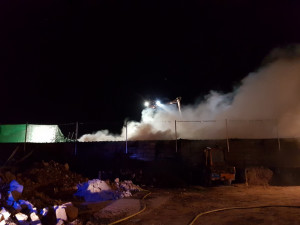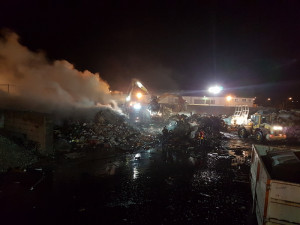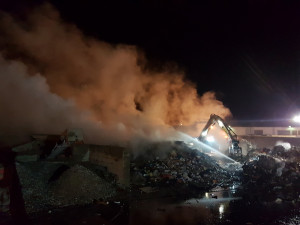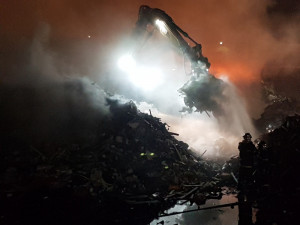At around 8:40 p.m. one Saturday, a fire broke out on a cell of the outdoor storage area of a waste sorting facility. Despite the concrete fire walls, the fire spread to the adjacent cell after debris containment netting caught fire and fell onto it.
Thick smoke was visible from several kilometres away. The firefighters pumped water from the River Oise. Residents downwind of the fire were confined indoors. The fire was extinguished at around 22:30 a.m. A specialist company pumped the firewater confined on the site. The burnt waste was sent to a storage facility. The site did not resume operations until Monday afternoon.
The accident occurred over the weekend, when the facility was operating with a limited workforce. The last waste delivery had occurred at 6:40 p.m. and the two employees left the site before 8:00 p.m. The start of the fire was recorded by the recently installed thermographic camera, but the alert was not given in time to prevent the flames spreading.
All the ‘reclaimable bulk waste’ had been delivered by the same customer and had come from surrounding waste collection centres. For many months, the sorting facility’s operator had been receiving non-conforming waste from this customer. However, incoming waste is supposed to be detected and sorted at waste collection centres beforehand, not at the sorting facility. Multiple fires had occurred in 2015 and 2016 (ARIA 46997, 48524, 48525). The same cause was suspected for this new fire.
The operator had implemented a number of actions following the previous fires. In particular, it sent nonconformity sheets to the customer each time it identified a problem. However, nonconforming wasted kept arriving. Each day, the operator collected and isolated nonconforming waste sent in by the customer (empty containers, WEEE, tyres, gas cylinders, paint cans, etc.).
The occurrence of yet another fire shows that visual checks during unloading are insufficient. A formal notification order and protective measures order were issued. Until it implements sufficient technical and human resources to ensure that incoming waste is conforming, the site is no longer authorised to receive waste over the weekend. The incoming waste check procedure was reinforced (use of a handheld thermographic camera). An emergency procedure was created to handle nonconforming waste. When such waste is received, it is systematically refused, the producer is informed, and the waste is either immediately returned or sent to an appropriate treatment centre.







